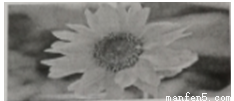题目内容
Passenger pigeons (旅鸽)once flew over much of the United States in unbelievable numbers.
Written accounts from the 18th and 19th centuries described flocks (群)so large that they darkened the sky for hours.
It was calculated that when its population reached its highest point ,there were more than 3 billlion passenger pigeons—a number equal to 24 to 40 percent of the total bird population in the United States, making it perhaps the most abundant bird in the world. Even as late as 1870 when their numbers had already become smaller, a flock believed to be 1 mile wide and 320 miles (about 515 kilometers) long was seen near Cincinnati.
Sadly the abundance of passenger pigeons may have been their undoing. Where the birds were
most abundant, people believed there was an ever-lasting supply and killed them by the thousands.
Commercial hunters attracted them to small clearings with grain, waited until pigeons had settled to feed, then threw large nets over them, taking hundreds at a time. The birds were shipped to large cities and sold in restaurants.
By the closing decades of the 19th century ,the hardwood forests where passenger pigeons nested had been damaged by American’s need for wood, which scattered (驱散) the flocks and forced the birds to go farther north, where cold temperatures and storms contributed to their decline. Soon the great flocks were gone, never to be seen again.
In 1897, the state of Michigan passed a law prohibiting the killing of passenger pigeons but by then,
no sizable flocks had been seen in the state for 10 years. The last confirmed wild pigeon in the United
States was shot by a boy in Pike County, Ohio, in 1900. For a time , a few birds survived under human
care. The last of them, known affectionately as Martha, died at the Cincinnati Zoological Garden on
September 1, 1914.
1.In the 18th and early 19teh centuries, passenger pigeons____.
A. were the biggest bird in the world
B. lived mainly in the south of America
C. did great harm to the natural environment
D. were the largest bird  population in the US
population in the US
2.The underlined word “ undoing” probably refers to the pigeons’ ____.
A. escape B. ruin
C. liberation D. evolution
3.What was the main reason for people to kill passenger pigeons?
A. To seek pleasure. B. To save other birds.
C. To make money. D. To protect crops.
4.What can we infer about the law passed in Michigan?
A. It was ignored by the public. B. It was declared too late.
C. It was unfair. D. It was strict.
 名校课堂系列答案
名校课堂系列答案


 try to remember good moments to making me feel better. When I miss some friends or family member I also try to remember those happy moments we were spent together. In my opinion, the best way to help people be happy in life are to make them laugh every time we are feeling down. Also by give them love you can make them feel sure about themselves.
try to remember good moments to making me feel better. When I miss some friends or family member I also try to remember those happy moments we were spent together. In my opinion, the best way to help people be happy in life are to make them laugh every time we are feeling down. Also by give them love you can make them feel sure about themselves.